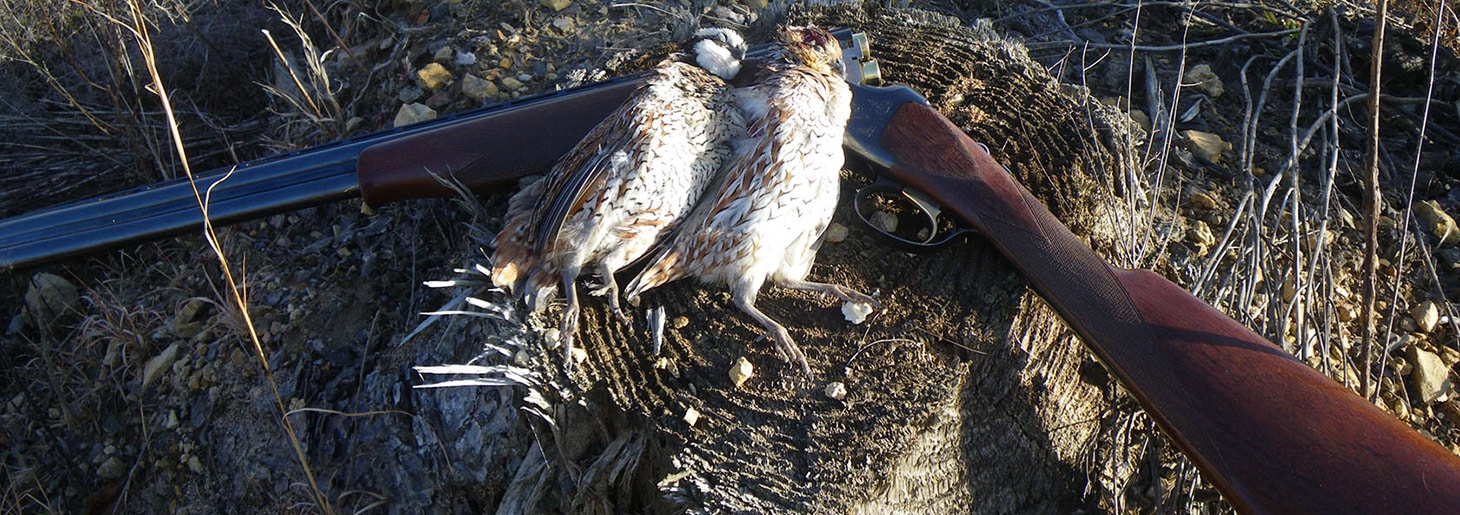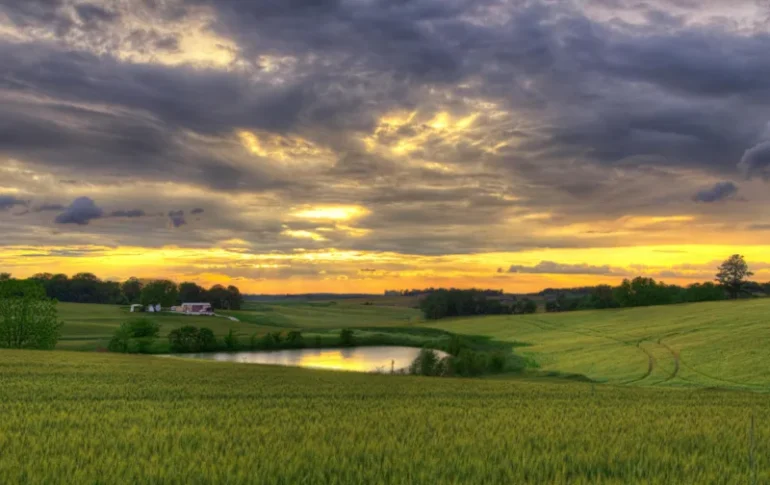Scotch Double
By George “Mac” E. McGee IV
Utilizing Traditional And Progressive Methodology To Enhance Your Property’s Recreational Hunting And Fishing Value While Improving The Core Value Of Your Investment-grade “working” Southeastern Land Property.
Many people simply construct a new fishing lake, create a new dove field, or plant new deer and turkey food plots, thinking it will improve the value of their Southeastern rural property. And in many cases, this is true. Recreational improvements are resurging in interest and appreciation due to the overall land market’s forward traction. Certain “trophy” properties are specifically designed primarily for recreational value, and Fay Ranches has a successful 25-year record of selling these types of properties. However, the lion’s share of large Southeastern rural lands are investment-grade “working” properties of agriculture or managing natural resources with annual income, expected return, and, often, both. And the recreational value of these working properties tends to be an afterthought or a minor consideration in the investment.
In this “warmer” land market, where recreational value garners more interest than it has since the 2008 collapse and where income/return-based land investments are most attractive, landowners should explore the various ways core and recreational values of Southeastern “working” land properties can be simultaneously enhanced.
Pine plantation conversion – Depending on the markets or a desired change in land use, it can be worthwhile for landowners to convert pine plantations to hay pasture or row-crop tillable ground. In areas where pine fiber or saw-grade timber markets have evaporated, converting pine timberland after harvest or while still in infancy to a more useable and revenue-generating resource makes great financial sense. Sometimes, reclaiming and reestablishing these tracts into planted mixed-hardwood stands makes great sense, too. Many argue that simply converting the monoculture of the pine plantations to tracts of varied use helps restore higher levels of biodiversity, enhancing a property’s wildlife and game. It’s also important to consider the benefits of keeping scattered stands of tall pines for aesthetics and scattered thickets of young pine for protective wildlife habitat.
Prescribed burns – Mostly used by larger timber holding companies to control undergrowth and reduce the accumulation of typical forestland combustible fuels in industrial-sized pine plantations, prescribed burning can also benefit hardwood forests, wild grassland prairies, and wetland areas. Not only do burns clean out forest floors, but they also help restore the natural diversity of native trees, plants, and grasses, which greatly benefits the wildlife and game with improved cover and food.
Stand improvement cuts – One of the most valuable but least implemented techniques for enhancing the value of immature Southeastern hardwood tracts. While short-term investors are rarely interested because of the false perception of no ROI, there are value-add benefits to be realized through the course of the hardwood stand’s cycle after an improvement cut. A properly conducted improvement cut rebalances a stand’s age and species content and gives it “breathing room” for faster and better quality growth, and also enhances wildlife and game habitat, land aesthetics, and usability. Sometimes woody debris and younger trees removed in improvement cuts can be sold as fiber or another commodity to generate revenue to help offset the expense.
“Cut-over” hardwood conversion – It can be beneficial for cattle operators or row-crop farmers to harvest pockets or perimeter stands of mature, merchantable hardwood and convert this ground to expand their operational acreage as the timber revenue offsets the expense of immediate land conversion.
However, converting years-old hardwood “cut-over” ground to other use can be expensive. Conversion of previous hardwood stands is costlier and takes longer than pine timberland conversion because hardwood stumps are bigger and take longer to rot, and amending the soil can be challenging. Even where hardwood stumps have finally rotted, conversion can still be daunting because of thick, regenerative growth. This is where it’s very important for a landowner of such ground to perform a cost-benefit analysis between conversion and improvement cutting. It is also worth remembering the benefits of keeping scattered thickets of young hardwood as protective areas for deer, quail, turkey, and other game.
Pine plantation thinning – Sometimes, I come across planted pine properties with portions at their thinning stage, and the landowners are slow to do anything. It behooves them to get their thinning contracted so they maximize the growing environment for their stands, especially when they can offset the expense by selling the thinned softwood fiber to local paper/pulp mills. Maintaining basal area control is key for optimizing quality and speed of growth. In regards to wildlife, yes, thinning removes some of the protective wildlife habitat elements of a thicket, but, on the other hand, and more importantly, it helps to open the canopy of the plantation to allow for sunlight which in turn stimulates plant growth for food and cover for game in the understory.
Mineral rights restoration – While few associate mineral rights issues with Southeastern states, they are a concern today more than ever. Development of coal, oil, gas, clays, zinc, limestone, and other minerals is an important part of the economic landscape. In pockets throughout the Southeast, severance of mineral rights occurred long ago, generating decades of separate ownership, a chain of title, and competing claims. Whether it’s interest in future mineral development or simply “peace of mind,” land investors today are more savvy about property rights. If your property has any mineral rights severance (3rd party ownership), it can be valuable to buy back these rights or pursue other legal remedies to restore the rights. And it’s worth knowing who owns the mineral rights in cloudy title situations to understand the intent and capability of development of the identified owner. Although indirectly related, restoration of mineral rights puts complete control back in the owner’s hand, so wildlife and game habitat enhancement aren’t in jeopardy of destruction by 3rd party mineral development.
Water source protection and enhancement – Because livestock operations are typically very dependent upon natural water sources, it is becoming more imperative for landowners throughout the Southeast to consider strategic, effective fencing to provide fresh watering areas while also protecting important watershed or lake edges. An eroded lake edge or stream bank is not only an eyesore, but it impairs water quality and natural fish (prey and predator) habitat. Protecting watering areas and sources can pay off in the long run with increased attractiveness, less maintenance of waterfront edge and bank, and increased water quality and fishing habitat. And if you are a Southeastern landowner fortunate enough to have a cold-water trout fishery running through your property, you hopefully already know the value of protecting your water’s edge.
Open livestock field enhancement – I have a friend who runs cattle, and his idea of good grazing and haying fields is very few trees, clean fence lines, and almost-industrialized grass, which makes economic sense in the short view. In the long view, these livestock properties scant on trees and other landscaping often end up limiting their value to only cattle or other livestock capacities. Fortunately, my friend’s wife has picked up on the value-add of keeping beautiful white oaks and other aesthetically pleasing and wildlife-supporting trees, so now when they develop a livestock property, they strive to maintain its attractiveness, support wildlife and game habitat, and offer their cattle more shade while concurrently reaching profitable livestock capacity. Livestock needs shade anyway.
Cover crops and soil improvement – Utilizing “down” time in between exhaustive seasonal crops like corn can benefit your agricultural property. It baffles me how often I view agricultural row-crop properties where fields from late fall through mid-spring are left to decaying previous-season crop byproducts and regenerative non-beneficial weeds when they could be experiencing a double-crop opportunity like winter wheat or growing a cover crop that helps manage soil, erosion, and water quality while providing an additional agroecosystem of food source and habitat to further support wildlife and game. Because cover crops help prevent erosion, they also indirectly support healthier water quality and fisheries in the lakes and live waters of these agricultural properties.
These methods of increasing the core and recreational value of Southeastern properties are worth consideration. Some have evolved from traditional practices, and some are more progressive. And some can even be paid by Uncle Sam through conservation programs at your local FSA or NRCS office. Why not experience a substantive appreciation of core and recreational value of your “working” property when it is there for the taking? Sometimes it simply takes a little nudge down a road less traveled.
We suggest performing annual cost-benefit analyses on almost every aspect of your land asset. It’s important for the health of your annual income and the eventual expected return of your property and helps determine the next steps in improving your property’s value. Why not kill two birds with one stone? A “Scotch double” in value could be the next best shot you make.
Contact Fay Ranches at 800-238-8616 or [email protected] to find out if we can be of service to you in evaluating the value or enhancement of your property.





